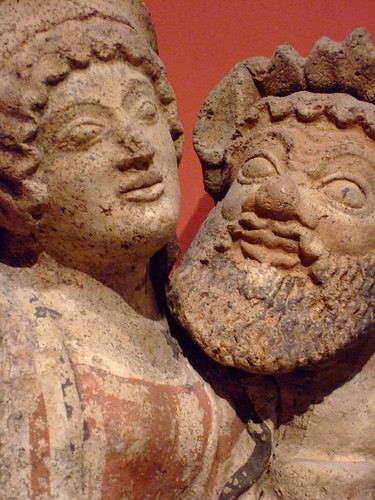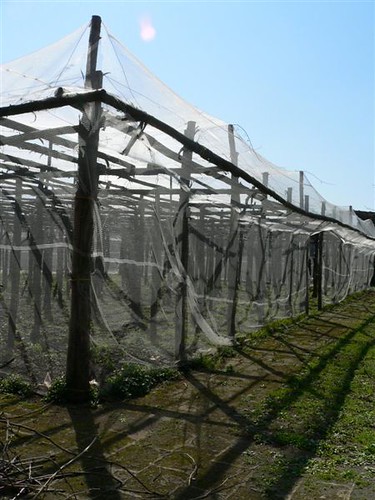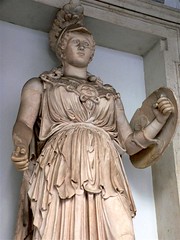 I had read about the studies on Tuscan cattle earlier this year. Now the scientists have shown a link to the Etruscan people as well. I also find it gratifying that Herodotus was vindicated since some scholars have scoffed at his work, claiming it was too "fanciful" to be true.
I had read about the studies on Tuscan cattle earlier this year. Now the scientists have shown a link to the Etruscan people as well. I also find it gratifying that Herodotus was vindicated since some scholars have scoffed at his work, claiming it was too "fanciful" to be true."The long-running controversy about the origins of the Etruscan people appears to be very close to being settled once and for all, a geneticist will tell the annual conference of the European Society of Human Genetics today. Professor Alberto Piazza, from the University of Turin, Italy, will say that there is overwhelming evidence that the Etruscans, whose brilliant civilisation flourished 3000 years ago in what is now Tuscany, were settlers from old Anatolia (now in southern Turkey).
Etruscan culture was very advanced and quite different from other known Italian cultures that flourished at the same time, and highly influential in the development of Roman civilisation. Its origins have been debated by archaeologists, historians and linguists since time immemorial. Three main theories have emerged: that the Etruscans came from Anatolia, Southern Turkey, as propounded by the Greek historian Herotodus; that they were indigenous to the region and developed from the Iron Age Villanovan society, as suggested by another Greek historian, Dionysius of Halicarnassus; or that they originated from Northern Europe.
Now modern genetic techniques have given scientists the tools to answer this puzzle. Professor Piazza and his colleagues set out to study genetic samples from three present-day Italian populations living in Murlo, Volterra, and Casentino in Tuscany, central Italy. "We already knew that people living in this area were genetically different from those in the surrounding regions", he says. "Murlo and Volterra are among the most archaeologically important Etruscan sites in a region of Tuscany also known for having Etruscan-derived place names and local dialects. The Casentino valley sample was taken from an area bordering the area where Etruscan influence has been preserved."
The scientists compared DNA samples taken from healthy males living in Tuscany, Northern Italy, the Southern Balkans, the island of Lemnos in Greece, and the Italian islands of Sicily and Sardinia. The Tuscan samples were taken from individuals who had lived in the area for at least three generations, and were selected on the basis of their surnames, which were required to have a geographical distribution not extending beyond the linguistic area of sampling. The samples were compared with data from modern Turkish, South Italian, European and Middle-Eastern populations.
"We found that the DNA samples from individuals from Murlo and Volterra were more closely related those from near Eastern people than those of the other Italian samples", says Professor Piazza. "In Murlo particularly, one genetic variant is shared only by people from Turkey, and, of the samples we obtained, the Tuscan ones also show the closest affinity with those from Lemnos."
Herodotus’ theory, much criticised by subsequent historians, states that the Etruscans emigrated from the ancient region of Lydia, on what is now the southern coast of Turkey, because of a long-running famine. Half the population was sent by the king to look for a better life elsewhere, says his account, and sailed from Smyrna (now Izmir) until they reached Umbria in Italy.
"We think that our research provides convincing proof that Herodotus was right", says Professor Piazza, "and that the Etruscans did indeed arrive from ancient Lydia." Carabinieri police officers inspect the ruins of an ancient Greek temple in Torre Melissa, Italy, where a developer was about to build.
Carabinieri police officers inspect the ruins of an ancient Greek temple in Torre Melissa, Italy, where a developer was about to build.









